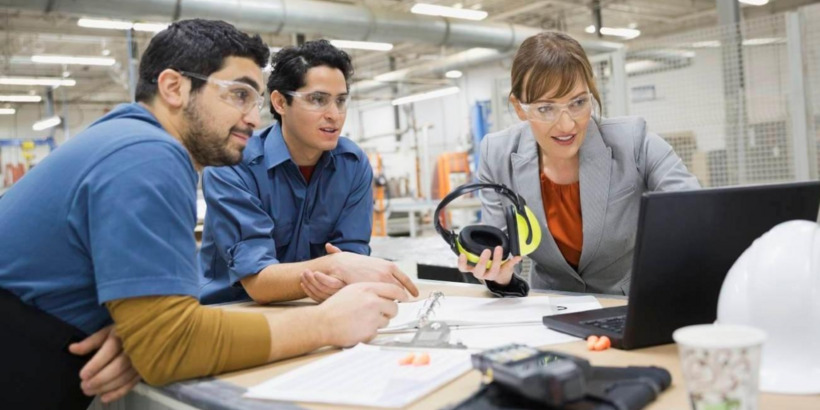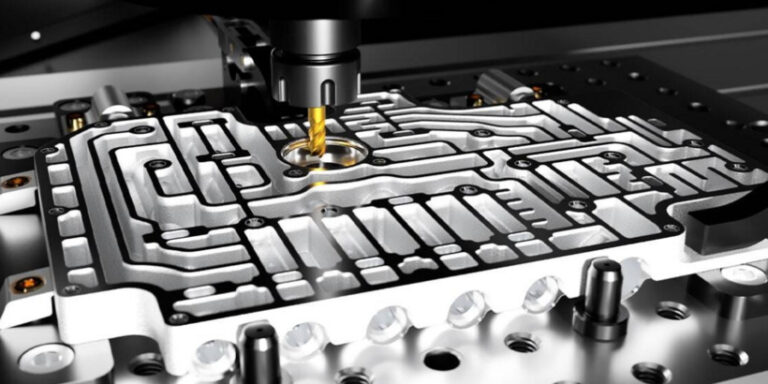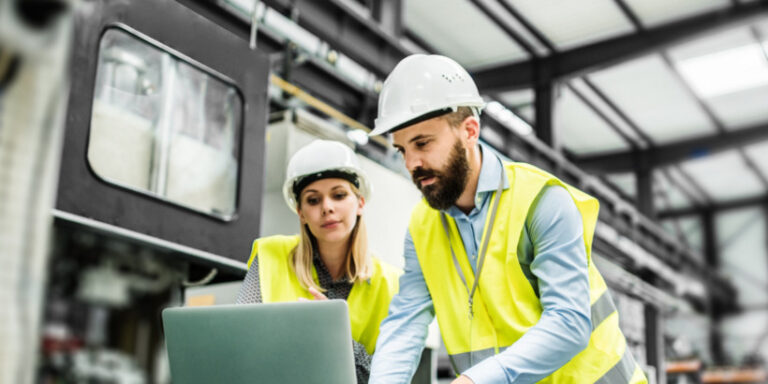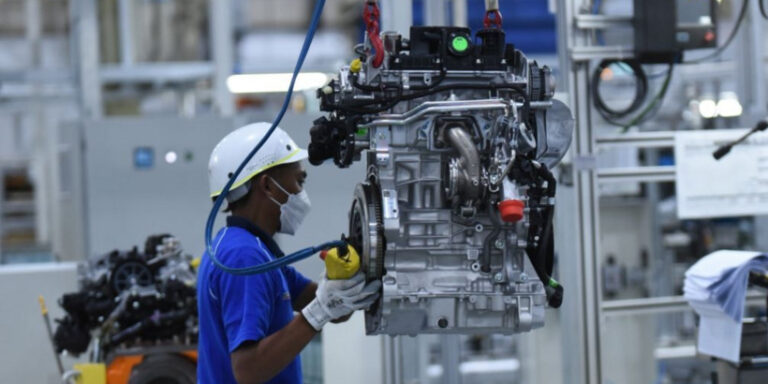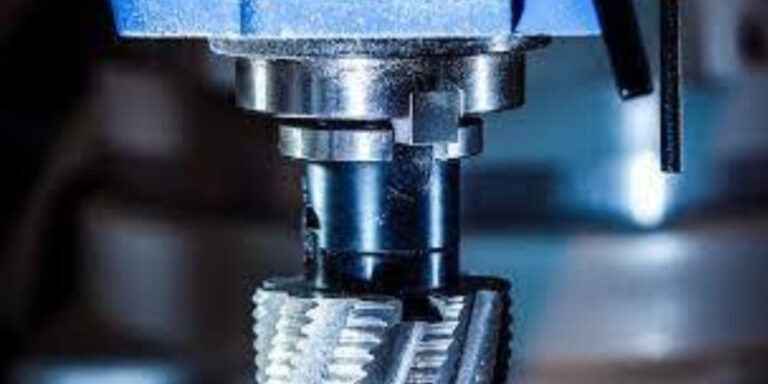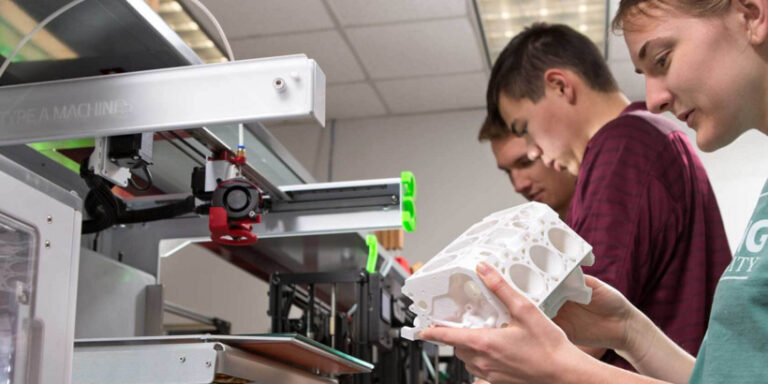The Role Of Additive Manufacturing In Modern Product Development
As a technology enthusiast, I am always fascinated by how the world of manufacturing and product development is evolving. One of the most significant changes in recent years has been the emergence of additive manufacturing or 3D printing as a viable alternative to traditional methods.
This technology has revolutionized the way companies design and develop products, making it possible to create complex shapes and structures that were previously impossible. In this article, I want to explore the role of additive manufacturing in modern product development.
From its early beginnings as a tool for creating prototypes, we will look at how it has evolved into a mainstream production method used across various industries. We will also examine some of the benefits and challenges associated with using this technology and consider what the future holds for additive manufacturing.
So buckle up and let’s dive into this exciting topic!
History And Development Of Additive Manufacturing
I’ve always been fascinated by the history and development of additive manufacturing. It’s amazing to think that this technology has come so far in such a short amount of time.
One thing I find particularly interesting is how open source CAD programs have played a role in advancing 3D printing. With these programs, anyone can create their own designs and bring them to life with a printer.
Additionally, 3D scanning has also been instrumental in the growth of additive manufacturing by allowing for accurate replication of existing objects.
Looking back at the evolution of this field makes me excited to see where it will go next.
Advantages Of Using Additive Manufacturing
Imagine being able to hold a physical prototype of your product in your hands within hours, rather than weeks or even months. That’s just one of the many advantages of using additive manufacturing in modern product development.
Not only does it save time, but it also saves money by reducing material waste and allowing for easy redesigns without costly tooling changes.
Moreover, additive manufacturing has a positive environmental impact as well since it reduces the need for large-scale production facilities and transportation costs associated with traditional manufacturing processes.
All these benefits make additive manufacturing an attractive option for businesses looking to improve their bottom line while minimizing their carbon footprint.
Challenges Of Using Additive Manufacturing
As we have seen, additive manufacturing has numerous advantages in modern product development. However, it is not without its challenges.
One of the most significant issues faced by manufacturers using this technology is rapid prototyping. Although 3D printing allows for faster design iterations, there can still be delays in creating physical prototypes due to machine capacity and material availability.
Additionally, while additive manufacturing can be cost-efficient for small production runs or customization, it may not always make financial sense for larger-scale manufacturing. Companies must carefully consider the trade-offs between upfront costs and long-term savings when deciding whether to invest in additive manufacturing technologies.
Despite these challenges, the benefits of additive manufacturing make it a valuable tool for modern product development, especially as advancements continue to improve speed and efficiency in the process.
Applications Of Additive Manufacturing
I’m really interested in learning more about the applications of additive manufacturing. Specifically, I’m curious about how rapid prototyping, 3D printing, and customization are being used in modern product development. It’s exciting to think about how these processes are revolutionizing the way products are made!
Rapid Prototyping
Have you ever tried to imagine how it would feel like holding your product prototype in your own hands?
With additive manufacturing, rapid prototyping is made possible.
The cost benefits of using 3D printing technology for producing prototypes are substantial because it reduces the costs that come with traditional methods such as injection molding or casting.
Scalability issues are also mitigated when compared to other techniques since it doesn’t require specific tooling or expensive molds to create a prototype.
As a result, designers and engineers can experiment with various design iterations without worrying about the added expenses that come with each iteration.
D Printing
So, we’ve talked about how additive manufacturing enables rapid prototyping and design iterations at a lower cost.
But did you know that 3D printing also has various applications in different industries?
One of the most notable applications is its ability to produce complex geometries with design flexibility.
With traditional methods, creating intricate designs can be challenging or even impossible.
However, with 3D printing technology, designers can create intricate shapes without worrying about molds or tooling limitations.
This opens up new possibilities for product innovation and customization across several fields such as medicine, aerospace engineering, automotive production, and more.
Customization
Now, let’s talk about another exciting application of 3D printing: customization.
As someone who loves personalized products, I find this particularly fascinating.
With additive manufacturing, businesses can implement personalization strategies that were previously too costly or time-consuming to execute with traditional methods.
This is because 3D printing materials allow for more design flexibility and the ability to produce unique shapes and sizes on-demand.
From customized jewelry to tailor-made prosthetics, the possibilities are endless when it comes to creating bespoke items using additive manufacturing technology.
Benefits Of Additive Manufacturing
When it comes to modern product development, the benefits of additive manufacturing are hard to ignore.
One major advantage is cost efficiency. Traditional manufacturing methods often require expensive tooling and molds, which can drive up production costs significantly. With 3D printing, however, there is no need for these costly upfront investments. Instead, products can be printed on demand, reducing waste and lowering overall expenses.
Another benefit of additive manufacturing is time savings. The traditional process of creating a prototype or part involves multiple steps that can take weeks or even months to complete. Additive manufacturing streamlines this process by allowing designers to create and test prototypes in a matter of hours or days. This not only speeds up the development cycle but also allows for more iterations and improvements along the way.
Overall, the advantages of additive manufacturing make it an increasingly popular choice for modern product development. From cost efficiency to time savings, 3D printing offers numerous benefits that translate into better products with faster turnaround times – all while keeping costs under control!
Future Of Additive Manufacturing
Have you ever wondered what the future holds for additive manufacturing?
Well, let me tell you, it’s looking pretty bright. With advancements in 3D scanning technology and materials engineering, we are on the cusp of a new era of product development.
Imagine being able to scan an object and immediately have its digital design ready for printing. Or being able to engineer specialized materials with specific properties tailored to each individual project.
The possibilities are endless and constantly expanding as this technology continues to evolve. It’s exciting to think about all the ways additive manufacturing will continue to revolutionize how we create products in the years to come.
Conclusion
Now that we have discussed the future of additive manufacturing, let’s take a moment to reflect on its current role in modern product development.
3D printing has become an essential tool for rapid prototyping and creating complex geometries that traditional manufacturing methods cannot achieve.
With the ability to produce parts quickly and efficiently, designers can iterate and test their designs at a faster pace than ever before.
Additive manufacturing also allows for customization and personalization of products, which is becoming increasingly important as consumers seek unique experiences.
As technology continues to advance, we can expect additive manufacturing to play an even larger role in product development, from aerospace components to medical implants.
It’s clear that this innovative technology is changing the way we think about design and production, opening up new possibilities for creativity and efficiency.
Conclusion
In conclusion, additive manufacturing has revolutionized modern product development. It has come a long way since its inception in the 1980s and continues to evolve with new technologies being developed every day. The advantages of using this technology are numerous, including faster production times, lower costs, and increased design flexibility.
However, there are also challenges that need to be addressed when using additive manufacturing. These include issues such as material selection, post-processing requirements, and the need for skilled operators. Despite these challenges, the benefits of additive manufacturing far outweigh any potential drawbacks.
Looking towards the future, it is clear that additive manufacturing will play an even more significant role in product development. As this technology continues to advance and become more accessible, we can expect to see an increase in its applications across various industries.
In short, additive manufacturing is here to stay and will continue to shape the way products are designed and manufactured for years to come. As they say: ‘out with the old and in with the new.’ Additive manufacturing represents a seismic shift from traditional methods of production, allowing us to create complex designs quickly and efficiently.
While it may sound like science fiction today or something out of Back To The Future II’s DeLorean time machine – but one thing’s for sure; we’ve only scratched the surface on what’s possible with such transformative technology!
